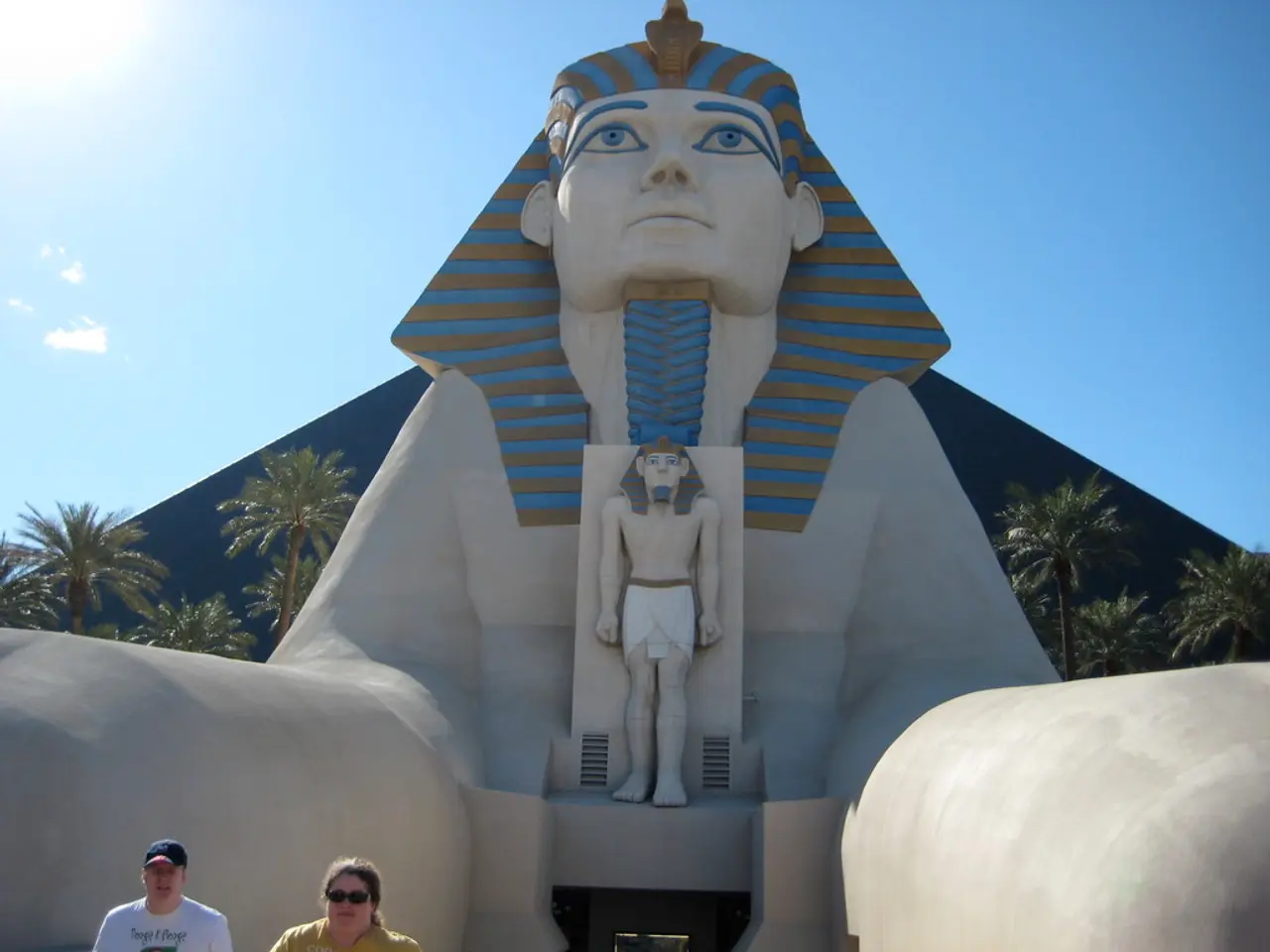Constructing the Pyramids of Giza: A Mystery Unraveled
In the heart of ancient Egypt, on the Giza Plateau, lies a long-vanished world that continues to captivate the imagination of scholars and tourists alike. The Pyramids of Giza, built around 4,500 years ago during Egypt's Old Kingdom era, are a testament to the ingenuity and craftsmanship of the 4th Dynasty, specifically Pharaohs Khufu (Cheops), Khafre, and Menkaure.
The Great Pyramid, standing tall at 481 feet, was constructed around 2560 BC for Pharaoh Khufu. Khafre, his son, followed suit, building the Pyramid of Khafre and the Great Sphinx around 2520 BC. The Sphinx, a limestone monument with the body of a lion and the head of a pharaoh, stands as a guardian of the pyramids. Menkaure, Khafre's son, built the third pyramid circa 2490 BC, which, at less than half the height of the first two, stands at about 218 feet.
The pyramids were built with the afterlife in mind, symbolizing a means by which the pharaoh might climb to the heavens. The infrastructure required to build these marvels had a lasting impact on Egypt, organizing people and resources in a way that extended beyond pyramid building. The city of Giza's builders lived in a complex of long barracks, separated by wide paved streets, thousands of years before its time. They enjoyed medical care, plentiful bread and beer, prime beef, and other goods sourced across Egypt.
The ancient Egyptians used the Nile River and a network of artificial waterways to bring materials to the Giza Plateau. The builders moved massive stone blocks to the heights along large ramps using a system of sledges, ropes, rollers, and levers. The pyramids were aligned with the compass points with uncanny accuracy, possibly using stars or mapping shadows on key dates like the fall equinox.
The Giza Project, an online repository of photographs, plans, drawings, manuscripts, object records, and expedition diaries from leading institutions, provides free access to unique Giza-related material. This resource preserves paintings and inscriptions that have since faded away, captures artifacts that have been lost or destroyed, and unlocks tombs not accessible to the public. Inscriptions and texts on tomb walls provide resources for studying Egyptian grammar and language.
Recent advancements in high-energy particle physics have allowed scientists to use cosmic rays to uncover hidden spaces within the pyramids, including one void that rivals the size of the pyramid's Grand Gallery and another passage, dubbed the North Face Corridor, to the Pyramid of Khufu. The ScanPyramids project, an international team under the authority of Egypt's Ministry of Antiquities, has been using modern technology to delve inside the pyramids since 2015 without setting foot inside.
It's unclear if anything is inside these spaces, but most experts believe they have no ritual significance and were likely used during pyramid construction as a carefully engineered system to distribute weight and stress. The pyramids of Giza still hold secrets, and scientists continue to make new discoveries using modern technology, such as cosmic rays to uncover hidden spaces.
The Giza Project and the ScanPyramids project offer virtual visitors the closest experience to a personal visit to Giza. GIZA 3D reconstructions allow them to wander the wonders of the plateau and take guided tours of pyramids, temples, and tombs. With each new discovery, the mysteries of the Pyramids of Giza continue to unfold, offering a glimpse into the ancient world that built these awe-inspiring structures.







